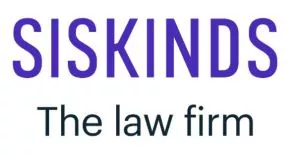What is a motion?
A motion is a court procedure used to resolve an interim dispute within your legal case. A motion can be brought within a legal action or a legal application. It is used to resolve procedural or substantive issues. Motions can be small and simple or large and complex. For example, a motion can be brought to obtain evidence (i.e. a discovery related motion), to stop a party from doing something (i.e. an injunction), or to have the case ruled on (i.e. a summary judgment motion). Whether a motion is appropriate is highly case specific. Because a motion is an extra step, it increases the cost and delays the case.
To further understand the context of how a motion fits into a legal action and a legal application, see my past blog posts: Going to court: Navigating commercial litigation in Ontario, and Going to court in Ontario: Commencing a legal application in a commercial litigation dispute.
The steps in a motion
- Motion record
The moving party (plaintiff or defendant) will serve their motion record on the responding party. The motion record states what the moving party wants the court to order and the evidence to support their request. The evidence is provided in an affidavit with supporting documents attached as exhibits. The responding party will then provide their responding motion record. Sometimes, the responding party will bring a cross-motion against the moving party for different relief. - Court ordered timetable
After the moving party has served the responding party with their motion record, the parties must attend court to schedule the steps in the motion process, including the hearing date. - Cross-examinations
Depending on the type of the motion, the witnesses who swore affidavits may be cross-examined on their affidavits. Non-party witnesses may also be cross-examined. Cross-examinations are less likely on procedural motions and simple substantive motions (i.e. discovery related motions) and more likely on complex substantive motions (i.e. a summary judgment motion). If a witness refuses to answer certain questions, further court attendances may be necessary to have the refused questions answered, depending on the importance of the question. - Written legal arguments
The parties each submit factum documents that argues their position by applying legal principles to the evidence. The facta, and all other material relating to the motion, are filed with the court so the judge can review it before the court hearing. - Court hearing
The parties each attend court to argue their position. In 2023, that usually happens virtually. For substantive motions, the parties are encouraged to attend to observe the hearing. If a motion is not opposed, the judge will usually rule on it at the hearing. If a motion is opposed, the judge will usually issue a written decision within three months of the hearing.
It usually takes six months to resolve an opposed motion. This time can vary significantly depending on the volume, complexity, and urgency of the motion.
Settlement
Motions can fully or partially settle before they are argued in court. However, the moving party who brings the motion should presume the motion will be argued in court.
Cost recovery
In Ontario, the successful party on a motion usually recovers 50% of their legal fees from the loser. Costs are always at the court's discretion.
Experienced legal support for your commercial litigation needs
Our team of business and commercial litigation lawyers understands the unique challenges faced by businesses today. With extensive court experience at all levels, including the Superior Court of Justice, Divisional Court, Court of Appeal for Ontario, Federal Court (Canada), Federal Court of Appeal, and the Supreme Court of Canada, we know how to protect your rights and ensure you reach a proper conclusion to your commercial dispute.
The content of this article is intended to provide a general guide to the subject matter. Specialist advice should be sought about your specific circumstances.


